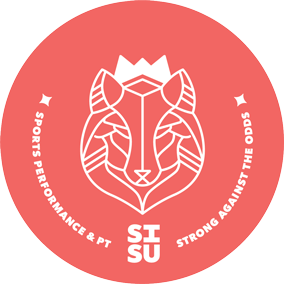High Hamstring Tendinopathy : a pain in the butt
Ahh yes, the ol’ pain in the butt: hurts to sit, hurts to run, hurts to stand. This little joy of an injury is a true pain in the arse.
Proximal hamstring tendinopathy (PHT) isn’t all that uncommon in athletes, but the research on this particular tissue issue is more than lacking, it’s basically non-existent.
Admittedly, this came as quite a surprise to me, in part because we have some really compelling literature on tendinopathy, just not when it comes to the high hamstring. (Cook et al. 2016; Rio et al. 2015)
Symptoms of PHT might include pain or an ache in the deep gluteal region (butt pain), pain and discomfort with sitting, pain with certain sports or activities (such as kicking a ball or running fast).
What do we know about tendinopathy?
Studies done on lower limb tendon pain have demonstrated that there appears to be 2 types of tendinopathy: reactive tendinopathy and reactive-on-degenerative tendinopathy.
Reactive tendinopathy often occurs as a result of acute overload. Basically someone does something that they’re not prepared for too quickly and the tendon doesn’t have time to adapt.
Reactive-on-degenerative tendinopathy is far more complicated, but basically means that your tendon hurts and there are some degenerative changes in the tissue associated with that.
Sisu Sidebar: If you could see some of the graphs and charts in these articles, your eyes would bug out. Try not to get too hung up on the terminology above, because what matters most is the pain you feel and what you can do about it and we’ll get to that later.
There are several different models pertaining to tendons and their function: 1) a collagen disruption/tearing model 2) an inflammation model and 3) a tendon cell response model (Cook et al. 2016).
None of these models encompass everything you need to know about tendons, which is why there is more than one (in fact, more than 3, but for the purpose of this article, this is based off of Jill Cook’s research).
Part of the reason for the multitude of models on tendon pathology, is because tendons are incredibly complicated. Even writing this blog has me in a bit of a swirl about where to focus the information I provide.
It is also important to note that none of these models do a good job of explaining pain, because one thing seems to be universally clear, you can have a lot of tendon pathology and absolutely no pain and you can have very little to no tendon pathology and a lot of pain.
It seems reasonable to suggest that tendon pathology is a risk factor for pain and the research seems to agree on that front. But the question becomes, how do you KNOW if you have tendon pathology and is it important that you do?
What can you do about tendon pain?
I think the biggest question that arises with the athletes I work with is “how do I know if I’m doing more damage to my tendon?” Studies done on tendons have looked at this and the simple answer is, we don’t know.
Theories suggest that when a tendon is reactive-on-degenerative, “overdoing it” with activity has the potential to lead to increased degeneration of that tendon, but I see 2 problems with this; 1) That doesn’t necessarily mean you’ll have increased pain, and the literature isn’t conclusive on the risks of “overdoing it” and 2) UNDERdoing it, has also been linked to increased degenerative changes in the tendon.
So you’re damned if you do and you’re damned if you don’t?
Well, not really.
We have some reasonable evidence to suggest that tendons don’t like being rubbed, dubbed, poked, prodded, and scraped. The main goal with any quality rehab program should be to get you USING your tendon in a way that builds those tissues up, while also offering pain relief in the process.
2 things that should be a staple in your rehab
-
Heavy, slow resistance training can be both an analgesic (pain reliever) AND a way to build up the tendon tissue to prepare it for sport.
-
Heavy, slow resistance to the beat of a metronome. Ebonie Rio has some really cool work on auditory feedback and its influence in reducing a person’s tendon pain. (Rio et al. 2015)
We also have some reasonable evidence to suggest what doesn’t work really well in treating tendons: manual therapy/massage, dry-needling, stretching or rest. Tendons don’t like being manipulated.
What can you do about high hamstring tendon pain?
There is no doubt that high hamstring tendinopathy is frustrating, annoying and as I’ve already mentioned, a huge pain in the arse. And I think too often, this tissue issue is mismanaged and that can make the recovery more difficult.
Try isometric exercises
I like to start folks on holding exercises: aka isometrics. Isometric exercises can offer immediate pain relief and be non-threatening to tendon tissue.
Here is an example of an early-stage rehab exercise I might give to an athlete with high hamstring tendinopathy:
Slow, heavy resistance to a beat
I like to add an audible beat to an exercise for several reasons. 1) Because, as I mentioned earlier, it has been shown to decrease pain response, 2) because it forces a person to think about keeping the beat and serves as an incredible distraction from their pain and 3) because it slows them down with the exercise and allows forces to be transferred through the tendon as they do it.
Here is an example of an early stage rehab exercise done to the beat of a metronome for high hamstring tendinopathy:
As an athlete progresses through their rehab, exercises should become increasingly heavy, and increasingly fast.
We may need to talk about the FUNCTION of tendons at a later date but for now, know that a program to help treat a tendon issue should be progressive and overload the tissue to foster tendon adaptation.
Thank you for taking the time to read this blog article, please give it a like and a share if you found it useful!
If you have any questions, please don’t hesitate to reach out to me via email: ellie@sisuwolf.com or schedule an appointment with me.
And don’t forget to follow me on Instagram and Youtube for more content and information related to female athletes, physical therapy and performance.
Cheers,
Dr. Ellie Somers
Physical Therapist, Run Coach
References:
Cook, J. L., E. Rio, C. R. Purdam, and S. I. Docking. 2016. “Revisiting the Continuum Model of Tendon Pathology: What Is Its Merit in Clinical Practice and Research?” British Journal of Sports Medicine 50 (19): 1187–91.
Rio, E., D. Kidgell, M. van Ark, H. Zwerver, I. Sheek, G. L. Moseley, J. Gaida, S. Docking, and J. Cook. 2015. “Tendon Neuroplastic Training Reduces Tendon Pain and Muscle Inhibition in-Season: Changing the Way We Think about Exercise.” Journal of Science and Medicine in Sport. https://doi.org/10.1016/j.jsams.2015.12.368.
Sisu Sports Performance & PT is accepting new clients!! Feel free to send me an email or schedule an appointment today!





